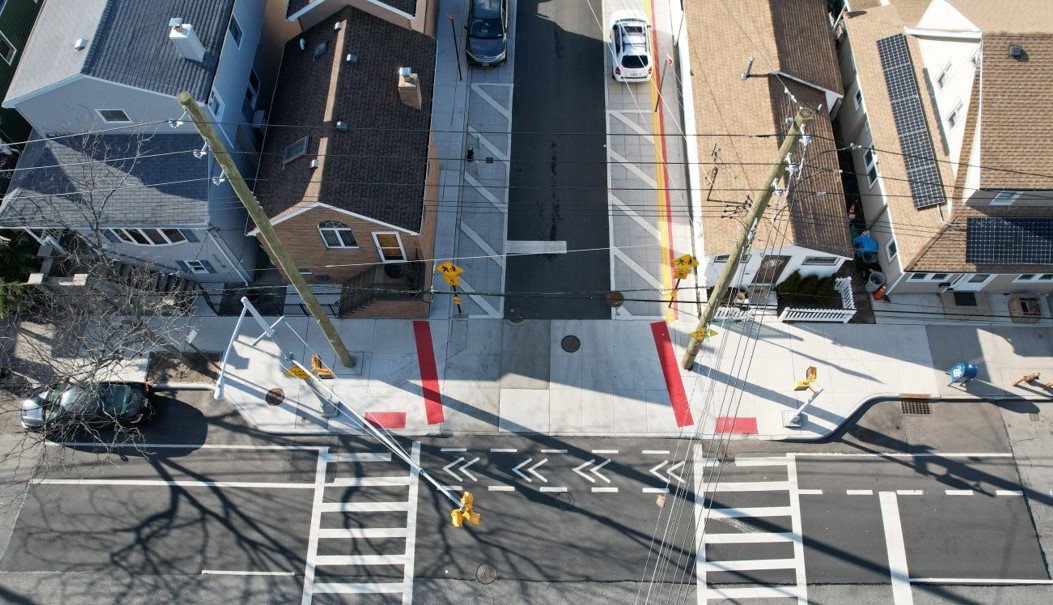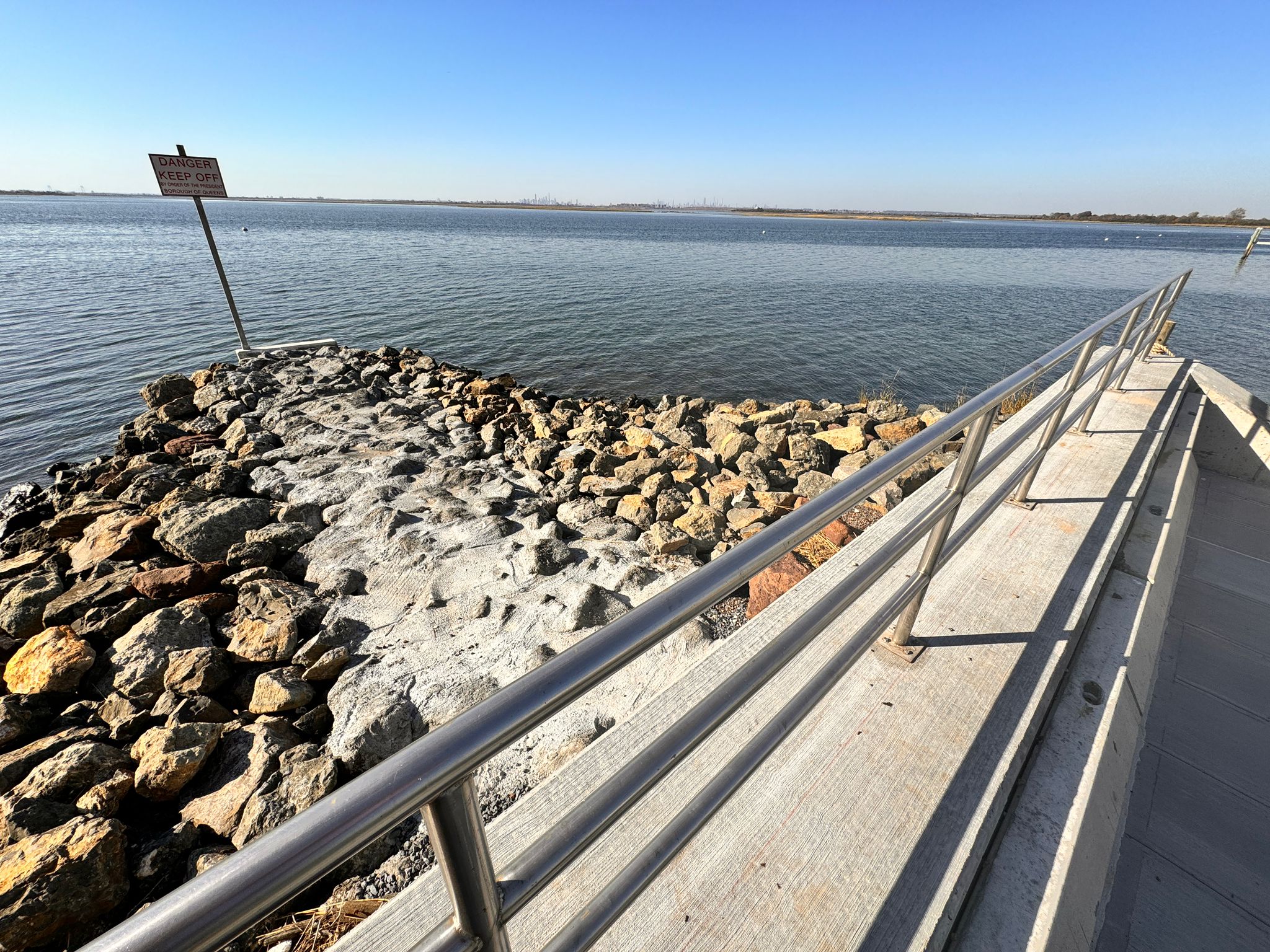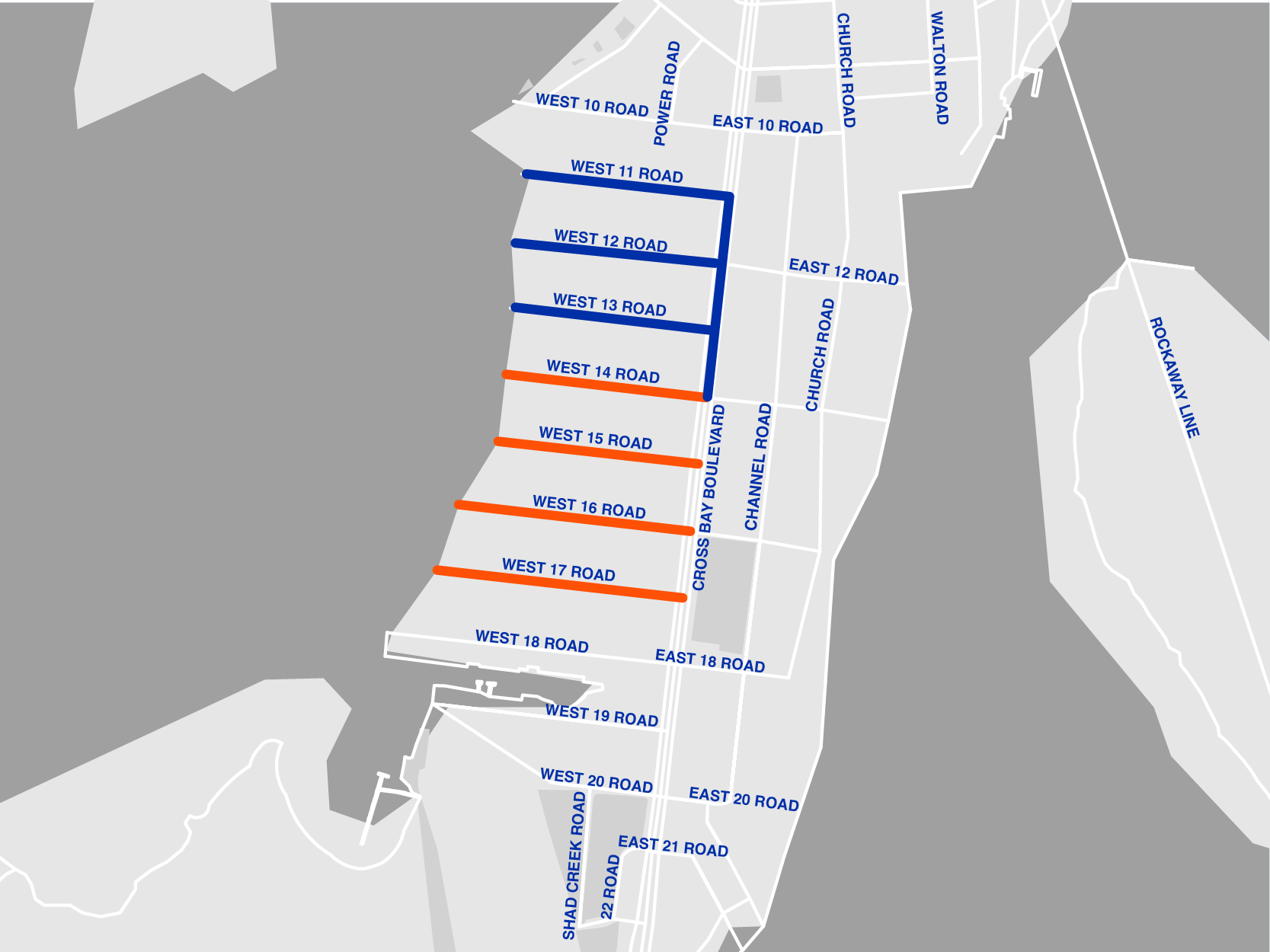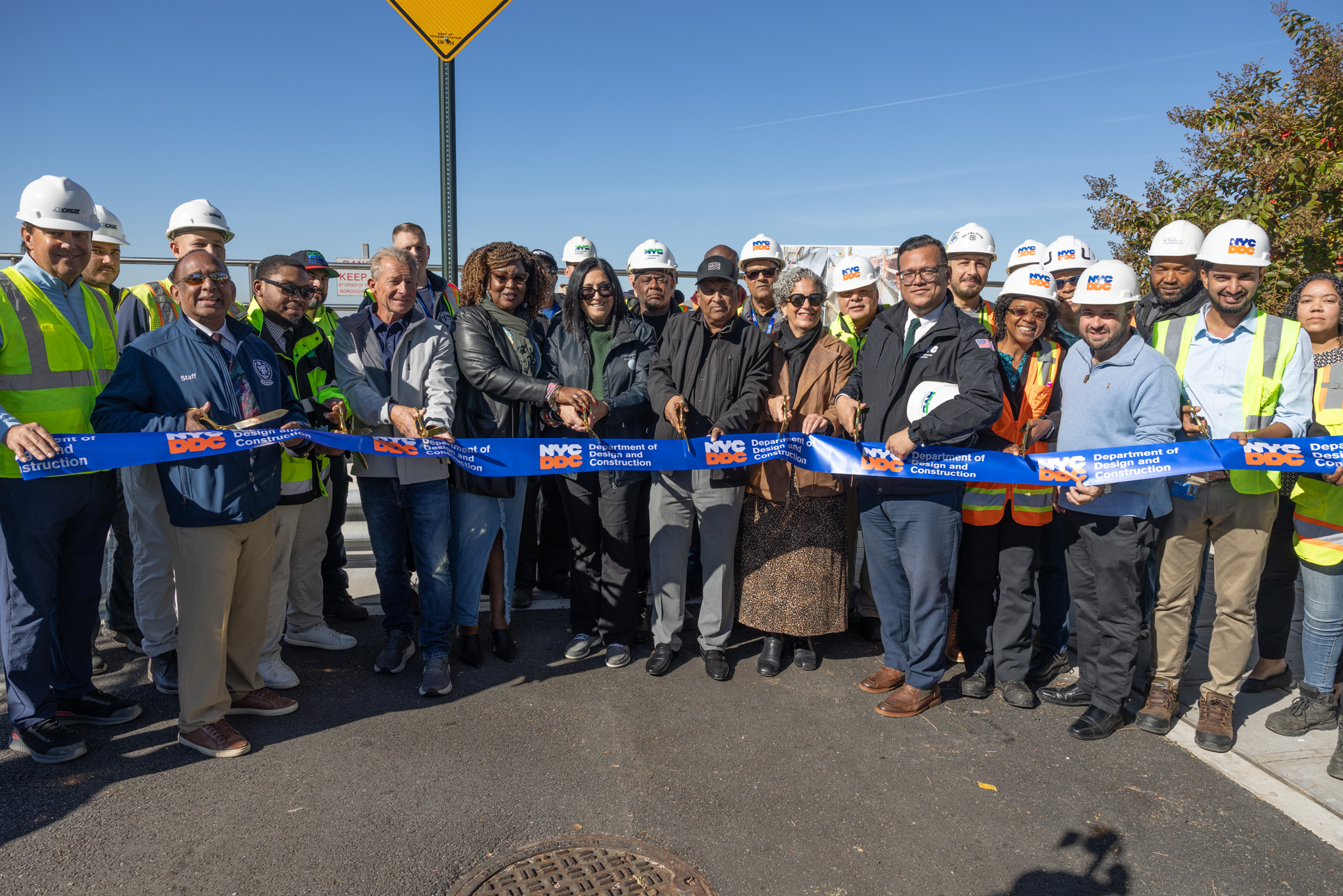City Completes Phase II of Broad Channel Project, Raising Streets and Adding New Sewers and Bulkheads
October 25, 2024
Completed on time and under budget, work was done one block at a time to minimize disruption in the area
The NYC Department of Environmental Protection (DEP), the NYC Department of Transportation (NYC DOT) and the NYC Department of Design and Construction (DDC) today announced the completion of a $51 million infrastructure project that raised streets, installed new storm sewers and reconstructed bulkheads in Broad Channel, Queens. The project, which DDC managed for DEP and DOT, was completed on schedule and $4 million under budget.
The neighborhood is surrounded by Jamaica Bay and is one of the lowest-lying areas in the city, susceptible to storms and regular tidal flooding. In August 2020 the city completed phase one, a similar project, at a cost of $46 million.

“The residents of Broad Channel regularly experience firsthand what it’s like to be on the front lines of our changing climate,” said DEP Commissioner Rohit T. Aggarwala. “On one of the lowest-lying areas in the city and surrounded by Jamaica Bay, the area often deals with tidal flooding caused by rising sea levels and severe storms. This negatively impacts quality of life, disrupting daily schedules and causing property damage. Together with DDC, DOT, local elected officials, and community leaders, we have built infrastructure in this area as resilient and strong as its residents! New sewers, catch basins, bulwarks, and raised roads will work together to drain the water away from the roadways, and protect homes and businesses.”
“It is more important than ever that we protect against the threats of climate change, particularly in communities like Broad Channel that are uniquely vulnerable to future storms and flooding,” said NYC DOT Commissioner Ydanis Rodriguez. “It has been our pleasure to collaborate with DEP and DDC to better manage rainwater here while making the area safer for all road users.”
“DDC builds cool stuff all over the city and Broad Channel phases one and two are more examples of innovative projects that help manage the effects of climate change,” said DDC Commissioner Thomas Foley. “This project, which was recognized with an Envision Award from the Institute for Sustainable Infrastructure, was also completed on schedule and $4 million under budget, money that can be put toward more sustainable infrastructure. Thank you to the remarkable DDC team for wrapping up construction with minimal disruption to the neighborhood.”

As with phase one, the project raised roads by approximately three feet and reconstructed over 140 residential driveway areas to match the elevation of the new raised streets. Four new bulkheads were installed at the end of streets to protect them from the waters of Jamaica Bay.
To manage stormwater, over 3,000 feet of new storm sewers were installed. Approximately 3,500 feet of water mains and over 3,000 feet of sanitary sewers were also upgraded. Eight catch basins were replaced and 12 new catch basins were installed in the middle of the roads to divert water away from the properties and into the bay through the newly installed storm sewers.
The project also enhanced safety for pedestrians and drivers by upgrading pedestrian ramps, curbs, street lighting, signage and traffic signals. A new shared sidewalk design similar to phase one allows narrow streets to work as both vehicle pathways and wider pedestrian areas with flushed curbs to better manage rainwater. Roadway surfaces were enhanced by using specially scored, pigmented walkways to improve the durability of rigid concrete sidewalks.
In total, one acre of asphalt plus 31,000 square feet of sidewalk was replaced in the area, and nearly 17,000 square feet of new sidewalks were installed. To enhance fire protection, 14 fire hydrants were replaced and two new hydrants were installed.
In 2023, the project received an Envision Verified Award for its sustainability features from the Institute for Sustainable Infrastructure (ISI). The project was cited by ISI for improving quality of life, stakeholder relations, teamwork, and collaboration, evaluating climate resilience and enhanced infrastructure integration.

“Few communities in New York City are more vulnerable to climate change and tidal flooding than Broad Channel,” said Queens Borough President Donovan Richards Jr. “As sea levels rise and storms become more frequent, this $51 million project to make this community more resilient is critical to the health and safety of families who call it home. From raised streets to new storm sewers, water mains and bulkheads, this project has delivered for Broad Channel and I thank all our agency partners for their vital work.”
“Today we have reached a great milestone for the Broad Channel community, who for years have fought to protect their residents from flooding and water damage from storms and other extreme weather events,” said Assemblywoman Stacey Pheffer Amato, the host of the monthly task force that discusses and reviews this project. “By investing in innovative infrastructure measures now, we are preventing future loss of homes and property, and saving ourselves millions of dollars in the long run. This victory today was only achieved through hard work on a granular level: constant phone calls with all stakeholders, meetings between contractors and individual homeowners, and numerous information sessions led by Dan Mundy Jr. and the Civic Association. I want to thank all of our partners in government including DDC, DOT and DEP for working with the community and civic leaders for on this project.”
“The residents of Broad Channel have been dealing with severe flooding in their community for decades,” said Councilwoman Joann Ariola. “With this new infrastructure project, we are kicking off a new era for the neighborhood, and tremendously improving the quality of life for all those who call Broad Channel home.”
“We are delighted that the project came in on-time and under budget,” said Felicia Johnson of Community Board 14. “At the last District Cabinet meeting with the Borough President, DDC presented the projects online, and this one was projected to close on time. CB 14Q and the Broad Channel Community want to thank DDC, DOT, and DEP for the management, consideration, and administration of this project. This community waited a long time for these infrastructure needs to be addressed, and it is finally done. Thank you all for you hard work and dedication.”

About the NYC Department of Transportation
The New York City Department of Transportation’s (NYC DOT) mission is to provide for the safe, efficient, and environmentally responsible movement of people and goods in the City of New York and to maintain and enhance the transportation infrastructure crucial to the economic vitality and quality of life of our primary customers, City residents. NYC DOT’s staff manage an annual operating budget of $1.4 billion and a ten-year $33 billion capital program, along with 6,300 miles of streets and highways, over 12,000 miles of sidewalk, and approximately 800 bridges and tunnels, including the iconic East River bridges. NYC DOT’s staff also installs and maintains nearly one million street signs, 13,250 signalized intersections, over 315,000 street lights, and over 350 million linear feet of markings.
About the NYC Department of Environmental Protection
DEP manages New York City’s water supply, providing approximately 1 billion gallons of high-quality drinking water each day to nearly 10 million residents, including 8.5 million in New York City. The water is delivered from a watershed that extends more than 125 miles from the city, comprising 19 reservoirs and three controlled lakes. Approximately 7,000 miles of water mains, tunnels and aqueducts bring water to homes and businesses throughout the five boroughs, and 7,500 miles of sewer lines and 96 pump stations take wastewater to 14 in-city treatment plants. DEP also protects the health and safety of New Yorkers by enforcing the Air and Noise Codes and asbestos rules. DEP has a robust capital program, with a planned $29 billion in investments over the next 10 years.For more information, visit nyc.gov/dep, like us on Facebook, or follow us on X, formerly known as Twitter.
About the NYC Department of Design and Construction
The Department of Design and Construction is the City’s primary capital construction project manager. In supporting Mayor Adams’ long-term vision of growth, sustainability, resiliency, equity and healthy living, DDC provides communities with new or renovated public buildings such as firehouses, libraries, police precincts, and new or upgraded roads, sewers and water mains in all five boroughs. To manage this $33 billion portfolio, DDC partners with other City agencies, architects and consultants, whose experience bring efficient, innovative and environmentally-conscious design and construction strategies to City projects. For more information, please visit nyc.gov/ddc.




